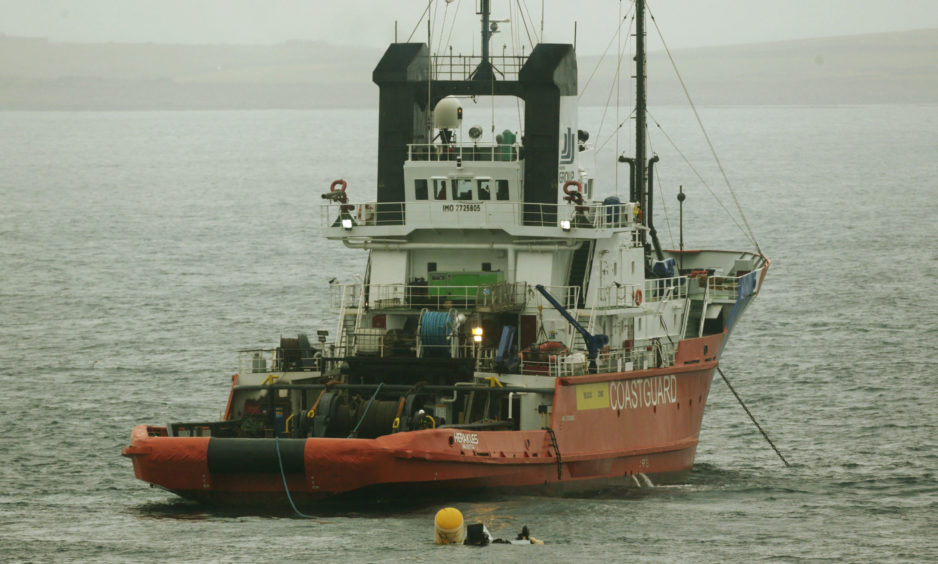
A senior pilot has told a court that the crew of a helicopter which crashed in the sea off Shetland had not complied with the standard operations regarding airspeed as they prepared to land.
Four of the 18 people on board the Super Puma L2 helicopter died in the crash on August 23, 2013, two miles west of Shetland. A fifth took his own life after suffering post-traumatic stress disorder.
Captain Mark Prior, an aviation consultant with 40 years’ experience in the industry, including flying for the Royal Air Force, said the two crew should have flown the approach at a stabilised speed, but “this safety barrier was broken”.
He added: “Because this barrier was removed that made the other safety barriers, such as monitoring instruments by the crew, more critical.
“If the crew did not scan the instruments that meant two safety barriers were removed.”
Sheriff Principal Derek Pyle said: “It seems to be agreed the first problem with the approach was that the crew did not stay at the stabilised speed of 80knots at 1000ft, some three miles from Sumburgh Airport?”
Capt Prior replied: “Correct. If they had flown at 80knots that would have allowed them to continue. They would not have been put in a regime of the handling becoming more difficult and in the end lost control.
“If you do not have a fixed speed and you continue to decrease your speed during the approach that means your rate of descent has to change, your power will need to change and your pitch would need to change.
“The crew were not compliant with the operations manual.”
Advocate depute Martin Richardson asked: “This non-compliance, did it meet, or not, the standard of reasonable care?”
Capt Prior replied: “It did not meet it.”
The inquiry has heard evidence about a report by the Air Accidents Investigation Branch, which said flight instruments were “not monitored effectively” by the pilots in the moments leading up to the crash.
The AAIB said a lack of monitoring meant a reduction in air speed from 80 knots to 35 knots was not noticed by the pilots and attempts to recover control were too late.
Mr Richardson then asked: “You treat the pilot flying and the pilot not flying together?”
Capt Prior replied: “As a crew they have many shared roles and among those shared roles are to monitor the instruments during the approach.
“They have joint roles they should be doing all the time, the balance varies during the stage of the approach.”
The inquiry was told that Capt Alan Bell would need to make “look-outs” for visual aids on the runway given the foggy conditions, so his eye would be taken away from the instruments.
However, Capt Prior claimed that the flying was a “joint responsibility” and the failures were shared, adding: “I assess them as a crew. Every six months you are trained and tested as a crew.”
Capt Prior suggested the crew’s pre-planning of the flight may also have prevented the tragedy at a much earlier stage.
He said they failed to get regular weather updates, including for airports they may have to divert to if they were unable to land at Sumburgh.
The Super Puma L2 aircraft had been tasked to fly to the Total-operated North Alwyn platform, before flying on to Borgsten Dolphin semi submersible and back to Aberdeen. A stop for fuel had to be planned.
Capt Prior said if they had received information about incoming fog in Shetland the crew may have decided to fly directly back to base in Aberdeen from the North Alwyn rather than collect extra passengers at Borgsten Dolphin – which resulted in them having to make a call at Shetland to refuel.
Capt Prior said: “At the flight planning stage, if the crew were aware of the true weather condition they might not have taken on the extra passengers on board.
“They could have flown directly back to base that then take on the need of extra fuel.
“These accidents rarely have on cause. There is a chain of events. The crew might have changed the plan. They might have asked air traffic control for an update on weather.
“There is a complete chain of events here and if any one of these had been broken then this event would not occur.”
The passengers who died on the day were: Sarah Darnley, 45, of Elgin; Gary McCrossan, 59, of Inverness; Duncan Munro, 46, of Bishop Auckland; and 57-year-old George Allison, of Winchester.
Samuel Bell, from the London area, committed suicide four years later.
The inquiry continues.